#Royal Belgian Institute of Natural Sciences
Text
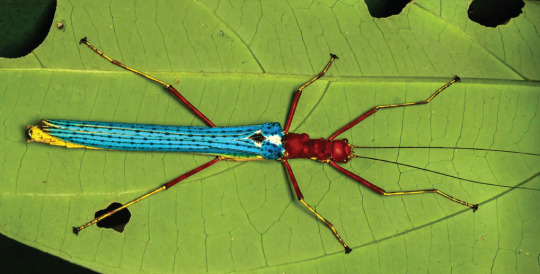


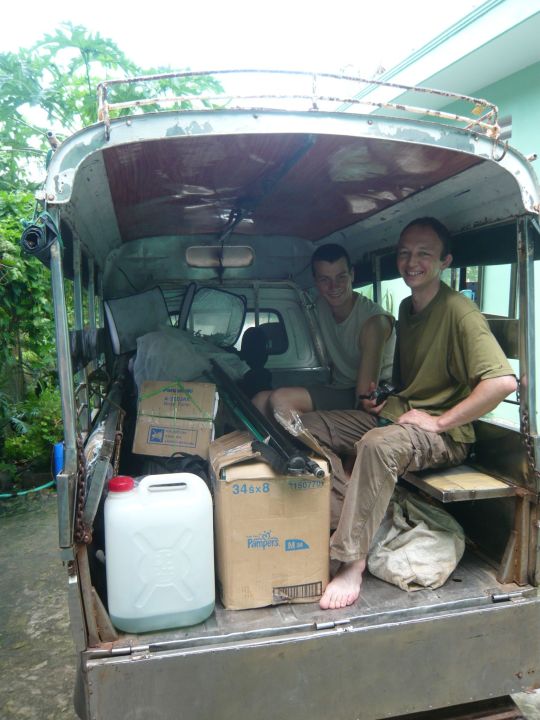
A bright blue stick insect! Stick insects are masters of camouflage, right? Well, our biologists just described a new species that didn't read the manual! #NatureIsTheGreatestShow
Why the wings are so blue and in-your-face remains a mystery for now. Possibly it signals to predators "I'm not tasty!". Indeed, these stick insects secrete a repellent substance.
It is even more fascinating: there are two types of females within this species Calvisia khlongsokana. One with blue wings and one with pale wings. This is not unusual in nature: two different types could increase the chances of survival when conditions suddenly change.
Together with colleagues our taxonomist Jérôme Constant and 'citizen scientist' Joachim Bresseel described this blue stick insect from Thailand and Myanmar. They regularly travel to Southeast Asia to find new species. It's an insect heaven that slowly reveals its secrets.
[Watch the mini documentary we made about their work]
#nature is the greatest show#naturalsciencesbrussels#insects#stick insects#entomology#taxonomy#thailand#myanmar#royal belgian institute of natural sciences
430 notes
·
View notes
Text
Peruvian fossil challenges blue whales for size
3 August 2023

By Jonathan Amos, Science correspondent
Scientists have identified a new candidate for the heaviest ever animal on Planet Earth.
It's an ancient, long-extinct whale that would have tipped the scales at close to 200 tonnes.
Only some of the very biggest blue whale specimens might have rivalled its heft, researchers say.
The creature's fossilised bones were dug up in the desert in southern Peru, so it has been given the name Perucetus colossus.
Dating of the sediments around the remains suggests it lived about 39 million years ago.
"The fossils were actually discovered 13 years ago, but their size and shape meant it took three years just to get them to Lima (the capital of Peru), where they've been studied ever since," said Dr Eli Amson, a co-worker on the discovery team led by palaeontologist Dr Mario Urbina.

Eighteen bones were recovered from the marine mammal - an early type of whale known as a basilosaurid.
These included 13 vertebrae, four ribs and part of a hip bone.
But even given these fragmentary elements and their age, scientists were still able to decipher a huge amount about the creature.
In particular, it's evident the bones were extremely dense, caused by a process known as osteosclerosis in which inner cavities are filled.
The bones were also oversized, in the sense they had extra growth on their exterior surfaces - something called pachyostosis.
These weren't features of disease, the team said, but rather adaptations that would have given this large whale the necessary buoyancy control when foraging in shallow waters.
Similar bone features are seen for example in modern-day manatees, or sea cows, which also inhabit coastal zones in certain parts of the world.
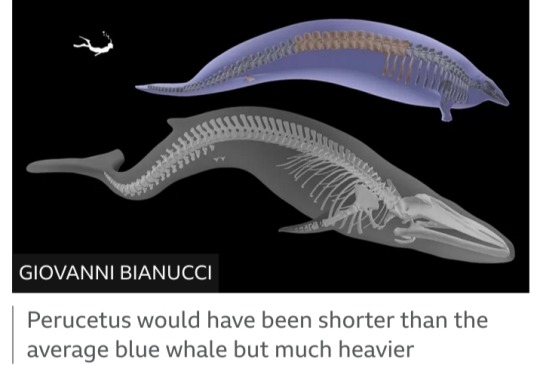
"Each vertebra weighs over 100kg, which is just completely mind-blowing," said co-worker Dr Rebecca Bennion from the Royal Belgian Institute of Natural Sciences in Brussels.
"It took several men to shift them out into the middle of the floor in the museum for me to do some 3D scanning.
The team that drilled into the centre of some of these vertebrae to work out the bone density - the bone was so dense, it broke the drill on the first attempt."
When confronted with a skeleton of a long-extinct species, scientists use models to try to reconstruct the body shape and mass of the animal.
They do this based on what they know about the biology of comparable living creatures.
It is predicted Perucetus would have been about 17-20m in length, which is not exceptional.
But its bone mass alone would have been somewhere between 5.3 and 7.6 tonnes.
And by the time you add in organs, muscle and blubber, it could have weighed - depending on the assumptions - anywhere between 85 tonnes and 320 tonnes.

Dr Amson, a curator at Germany's State Museum of Natural History Stuttgart, uses a median number of 180.
The largest blue whales recorded during the era of commercial exploitation were at this scale.
"What we like to say is that Perucetus is in the same ball park as the blue whale," he told BBC News.
"But there's no reason to think that our individual was particularly big or small; it was likely just part of the general population.
So it's worth keeping in mind that when we use the median estimate, it's already at the very upper ranges of what blue whales can measure."

One of the comparators used by the research team in its investigations is a blue whale that will be very familiar to anyone who has visited the Natural History Museum in London.
Nicknamed Hope, this animal's skeleton took pride of place at the institution when it was hung from the ceiling in the main hall in 2017.
But before being installed, the skeleton was scanned and described in great detail and is now an important data resource for scientists across the world.
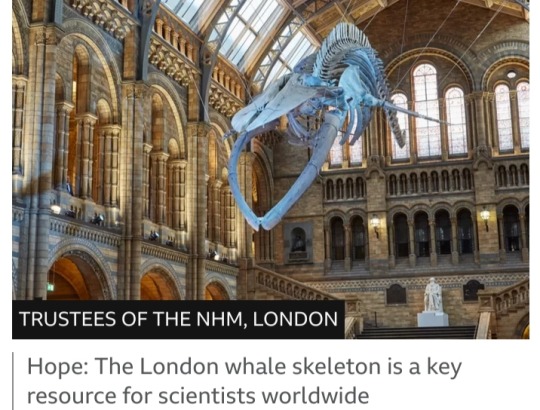
In life, Perucetus' skeletal mass would have been two to three times that of Hope, even though the London mammal was a good five metres longer.
Richard Sabin, the curator of marine mammals at the NHM, is thrilled by the new find and would love to bring some aspect of it to London for display.
"We took the time to digitise Hope - to measure not just the weight of the bones but their shape as well, and our whale has now become something of a touchstone for people," he said.
"We don't get hung up on labels - like 'which was the largest specimen?' - because we know science at some point will always come along with new data.
What's amazing about Perucetus is that it demonstrated so much mass some 30 million-plus years ago when we thought gigantism occurred in whales only 4.5 million years ago."
Perucetus colossus is reported in the journal Nature.
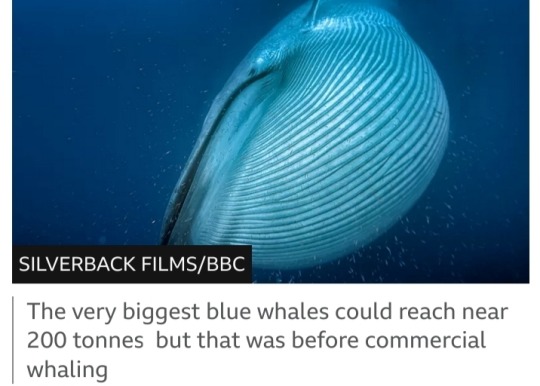
#Perucetus colossus#Perucetus#Peru#fossils#palaeontology#whale#basilosaurid#osteosclerosis#pachyostosis#Royal Belgian Institute of Natural Sciences#long-extinct species#State Museum of Natural History Stuttgart#blue whale#Natural History Museum#Hope#Peruvian fossil
23 notes
·
View notes
Text
In a discovery by researchers from Leiden University in the Netherlands, offshore wind turbines have become a haven for benthos — the community of marine organisms that live in, on or around the seafloor.
There are more soil animals per square meter living in the foundations of offshore wind farms than on the floor of the North Sea, a press release from Leiden University said.
“The turbine foundations provide hard substrate for settlement in areas where these habitats have never been present before. Except for islands, there are now structures spanning the entire range from sea floor to sea surface,” Jan Vanaverbeke, a postdoctoral researcher at the Royal Belgian Institute of Natural Sciences, told EcoWatch in an email. “A lot of organisms, normally living on hard substrates (rocks, bio- or geogenic reefs) have larvae with pelagic stadia, drifting in the water column and trying to find a suitable place to settle and grow into an adult. The turbines provide such substrate in areas where it has never been present before.”
In the area surrounding the wind farms, fishing is not allowed, meaning fish can flourish.
“Banning fisheries from offshore wind farms has positive effects as (1) wind farms provide a safe place for fish (where some species find a lot of food), and (2) the sea floor is not disturbed and therefore long-living animals have a chance to actually live long (they are not impacted/killed by the fishing gear that is passing),” Vanaverbeke told EcoWatch.
#good news#nature#animals#science#ocean life#marine life#environmentalism#conservation#environment#wind farm#wind energy
433 notes
·
View notes
Text

Some bi lighting for another super bizarre triceratops cast(?) on display at the Royal Belgian Institute of Natural Sciences. No idea what it's based on, but it doesn't look quite natural to me.

37 notes
·
View notes
Text

State visit to Belgium – programme
His Majesty King Willem-Alexander and Her Majesty Queen Máxima will be paying a state visit to Belgium at the invitation of His Majesty the King of the Belgians. The visit will start in Brussels on the morning of Tuesday 20 June and end in Antwerp on the evening of Thursday 22 June. The King and Queen will be accompanied by Minister of Foreign Affairs Wopke Hoekstra on the first and third days of their visit. Minister of Education, Culture and Science Robbert Dijkgraaf will accompany them on the second day. Minister for Foreign Trade and Development Cooperation Liesje Schreinemacher, Minister of Agriculture, Nature and Food Quality Piet Adema, Minister of Infrastructure and Water Management Mark Harbers, Minister of Defence Kajsa Ollongren, Minister of Social Affairs and Employment Karien van Gennip and Minister of Economic Affairs and Climate Policy Micky Adriaansens will each be attending separate parts of the programme.
The state visit will reaffirm the excellent ties between the two neighbouring countries, which have strong historical, social and economic links. Key common themes during the visit will be improving social and physical liveability, combating climate change, maintaining and promoting a safe society and working towards a sustainable future in which energy is green and affordable. The visit will further deepen the close collaboration between the Netherlands and Belgium, as they both work towards a safer, cleaner and more sustainable future.
Tuesday 20 June – Brussels
Morning
Arrival at Brussels Midi train station
The state visit will begin in Brussels, with the King and Queen arriving by royal train at Brussel Midi station where they will be welcomed by the Belgian foreign minister.
Welcome ceremony
King Philippe and Queen Mathilde will receive King Willem-Alexander and Queen Máxima at a welcome ceremony at the Royal Palace.
Afternoon
Wreath-laying ceremony
Following the welcome ceremony at the palace, the King and Queen of the Netherlands will lay a wreath at the Tomb of the Unknown Soldier. This monument commemorates all unidentified Belgian soldiers who fell during the First World War.
Federal Parliament
Following a lunch at the Royal Palace, King Willem-Alexander and Queen Máxima will visit the Federal Parliament of Belgium. They will speak with members of the Chamber of Representatives and the Senate before being given a tour of the building.
Meeting with the Prime Minister
The King and Queen will then meet with Prime Minister Alexander de Croo at Lambermont, his official residence.
Meeting with the mayor of Brussels and walkabout in Grand-Place
Later that afternoon both royal couples will be received by the mayor of Brussels, Philippe Close, at the town hall. During a walkabout in Grand-Place square the royal party will then have the opportunity to meet inhabitants of Brussels and tourists.
Evening
State banquet
In the evening King Philippe will host a state banquet at the Castle of Laeken, at which both heads of state will give a speech.
Wednesday 21 June – Brussels, Ottignies-Louvain-la-Neuve, Waterloo and Charleroi
Morning
Climate Tech Forum
The second day of the visit will begin at the Climate Tech Forum, part of the parallel economic mission headed by foreign trade minister Liesje Schreinemacher. The event will be attended by some 500 representatives of Belgian and Dutch knowledge institutions, businesses and public sector bodies. They will be exchanging knowledge and exploring opportunities for cooperation on green hydrogen, climate neutral construction, future-proof agriculture and horticulture, and smart, sustainable mobility. The royal party will also visit an innovation market highlighting Belgian-Dutch collaborations and attend part of the plenary programme. King Philippe and King Willem-Alexander will each give a short speech.
Aerospacelab
King Philippe and King Willem-Alexander will visit Aerospacelab in Ottignies-Louvain-la-Neuve which specialises in satellite data, and in designing, testing and producing satellites. They will be given a tour, visit the cleanroom and meet members of staff.
Queen Elisabeth Music Chapel
Queen Mathilde and Queen Máxima will visit the Queen Elisabeth Music Chapel in Waterloo. Each year the institution hosts approximately 70 international young musicians, who follow a programme of lessons, concerts and recitals, work with orchestras and participate in festivals. Queen Mathilde and Queen Máxima will meet several of the musicians, attend performances and be given a tour.
Afternoon
Lunch meeting on water management
The royal party will attend a lunch in the orangery at the Castle of Seneffe, at which Belgian and Dutch experts will give presentations on addressing the risks of drought and flooding.
BioPark Charleroi
In the afternoon the party will visit BioPark Charleroi, a biotech ecosystem where businesses and knowledge institutions conduct research on life sciences and develop solutions to challenges in healthcare.
Unveiling of comic mural and comic strip workshop
On arrival in Charleroi the royal party will walk to the Institut Saint-André school, while greeting the public. Outside the school they, and a number of pupils, will unveil a mural designed by the Dutch comic book artist Dido Drachman and Belgian graphic novel artist Christian Durieux. They will then participate in a comic strip workshop together with pupils from the school. The unveiling of the mural and the comic strip workshop will mark the end of a cultural festival involving Belgian and Dutch artists.
Evening
Concert
In the evening King Willem-Alexander and Queen Máxima will host a concert by the Amsterdam Sinfonietta string orchestra at the Flagey culture house in Brussels to thank their hosts for their hospitality.
Thursday 22 June – Leuven and Antwerp
Morning
Imec
The third day of the state visit will begin in Leuven, where King Philippe, Queen Mathilde, King Willem-Alexander and Queen Máxima will visit Imec, a research centre specialising in chip technology that supports companies developing digital applications. The royal party will attend a roundtable meeting with the CEOs of Imec’s Belgian and Dutch partners.
Royal Museum of Fine Arts Antwerp
King Philippe, Queen Mathilde, King Willem-Alexander and Queen Máxima will start their visit to Antwerp with a walk to the Royal Museum of Fine Arts (KMSKA). They will have the opportunity to meet the people of Antwerp along the way. The royal party will be given a tour of the museum, which boasts a collection representing seven centuries of art. The museum’s recent renovation was overseen by Dutch architect Dikkie Scipio. Its collection includes highlights of Flemish Baroque as well as examples of primitivism and expressionism, and features works by Peter Paul Rubens, James Ensor and Rik Wouters.
Afternoon
Lunch meeting on early school leavers and youth unemployment
After the museum tour the royal party will attend a lunch meeting on the theme of tackling youth unemployment. Many young people in Antwerp leave school without a qualification, while at the same time there are a large number of unfilled job vacancies at secondary vocational level. At the lunch young people will be sharing their experiences and speaking with researchers about the role of educational institutions and employers in guiding vulnerable young people and their development.
Port Authority Building
After the lunch meeting the royal party will be given a short tour of the Port Authority Building and will speak with CEOs and participants of the Belgian-Dutch Port Open Day being held in the Port of Antwerp. They will look at how ports and their industrial clusters can work together to achieve shared ambitions relating to the energy transition, and the infrastructure this requires.
Belgian and Dutch frigates
In the Port of Antwerp King Philippe and King Willem-Alexander will visit the Belgian frigate Louise-Marie, while Queen Mathilde and Queen Máxima visit the Dutch frigate HNLMS De Ruyter. There will be various demonstrations on board and on shore. This part of the programme will focus on the partnership between the Belgian and Dutch navies. The Royal Netherlands Navy and the Belgian Navy operate the same types of ships and helicopters, cooperate on maintenance and carry out joint exercises. Following the visit to the frigates, a farewell ceremony will be held on shore.
Reception for the Dutch community
At the end of the afternoon a reception for the Dutch community in Belgium will be held in the historic Handelsbeurs, Antwerp’s former stock exchange.
Government Information Service, no. 145
20 notes
·
View notes
Photo

Day 3 of @1dinodaily ‘s Dinovembre:
This is Ben the Plateosaurus whose almost complete fossil can be seen in the Royal Belgian Institute of Natural Sciences. I love him so much!!!!!
#dinovember#dinovember2022#Ben the Plateosaurus#Plateosaururs#dinosaurs#animals#thingsIdid#other#aquarelle
57 notes
·
View notes
Photo
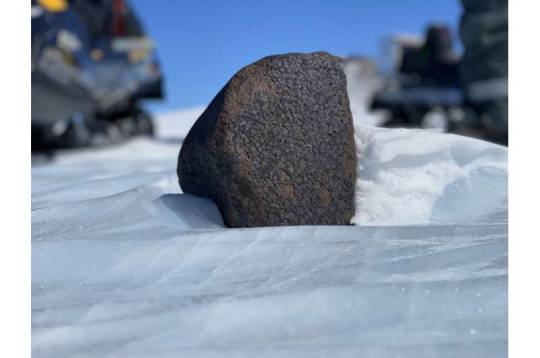

17-pound meteorite discovered in Antarctica Antarctica is a tough place to work, for obvious reasons—it's bitterly cold, remote, and wild. However, it's one of the best places in the world to hunt for meteorites. That's partly because Antarctica is a desert, and its dry climate limits the degree of weathering the meteorites experience. On top of the dry conditions, the landscape is ideal for meteorite hunting: the black space rocks stand out clearly against snowy fields. Even when meteorites sink into the ice, the glaciers' churning motion against the rock below helps re-expose the meteorites near the surface of the continent's blue ice fields. An international team of researchers who just got back from Antarctica can attest to the continent's meteorite-hunter-friendliness: they returned with five new meteorites, including one that weighs 16.7 pounds (7.6 kg). Maria Valdes, a research scientist at the Field Museum and the University of Chicago, estimates that of the roughly 45,000 meteorites retrieved from Antarctica over the past century, only about a hundred or so are this size or larger. "Size doesn't necessarily matter when it comes to meteorites, and even tiny micrometeorites can be incredibly scientifically valuable," says Valdes, "but of course, finding a big meteorite like this one is rare, and really exciting." Valdes was one of four scientists on the mission, led by Vinciane Debaille of the Université Libre de Bruxelles (FNRS-ULB); the research team was rounded out by Maria Schönbächler (ETH-Zurich) and Ryoga Maeda (VUB-ULB). The researchers were the first to explore potential new meteorite sites mapped using satellite imagery by Veronica Tollenaar, a thesis student in glaciology at the ULB. "Going on an adventure exploring unknown areas is exciting," says Debaille, "but we also had to deal with the fact that the reality on the ground is much more difficult than the beauty of satellite images." Despite timing their trip for Antarctica's summertime in late December, temperatures hovered around 14° F (-10° C). Valdes notes that some days during their trip, it was actually colder in Chicago than it was in Antarctica, but spending days riding snowmobiles and trekking through ice fields and then sleeping in a tent made the Antarctic weather feel more extreme. The five meteorites recovered by the team will be analyzed at the Royal Belgian Institute of Natural Sciences; meanwhile, sediment potentially containing tiny micrometeorites was divided among the researchers for study at their institutions. Valdes says she's eager to see what the analyses of the meteorites reveal, because "studying meteorites helps us better understand our place in the universe. The bigger a sample size we have of meteorites, the better we can understand our Solar System, and the better we can understand ourselves."
21 notes
·
View notes
Photo
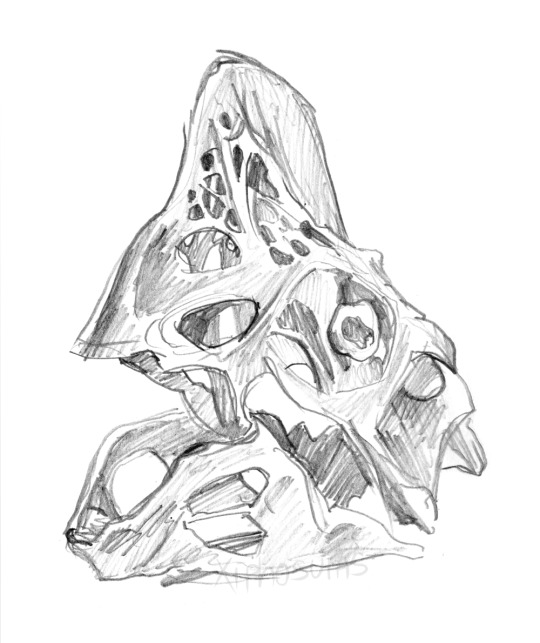
Visited the Royal Belgian Institute of Natural Sciences in Brussels with a friend of mine who lives there :) Naturally we had to draw fossils and taxidermied animals.
Here is the skull of an oviraptor. I’m probably going to ink this one later.
#oviraptor#oviraptor art#dinosaur art#dinosaur drawing#paleoart#sketch#Observational Drawing#prehistoric#animals
13 notes
·
View notes
Link
On Earth, there is a phenomenon known as nightglow, where the atmosphere experiences faint light emissions that prevent the night sky from becoming completely dark. This is caused by various processes in the upper atmosphere, like the recombination of atoms, cosmic rays striking the atmosphere, or oxygen and nitrogen interacting with hydroxyl a few hundred kilometers from the surface. Thanks to data obtained by the ESA’s ExoMars Trace Gas Orbiter (TGO), the same phenomenon has been observed in the Martian atmosphere for the first time. While scientists have long suspected that Mars also experiences this atmospheric phenomenon, this is the first time that effectively proves it. The revelation was made by an international team of scientists based on their analysis of data from the TGO’s Nadir and Occultation for MArs Discovery (NOMAD) spectrometer. When astronauts and rovers explore Mars’ polar regions in the near future, they will see a green glow whenever they look up at the sky and could even use the glow to navigate and find their way in the dark of night. The study was led by Jean-Claude Gérard, a Professor at the University of Liege’s Laboratory for Planetary and Atmospheric Physics/Star Research Institute (IPAP-STAR). He was joined by researchers from the Royal Belgian Institute for Space Aeronomy (BIRA-IASB), the School of Physical Sciences at The Open University, and the Instituto de Astrofìsica de Andalucía (IAA-CSIS). The paper that describes their findings, titled “Observation of the Mars O2 visible nightglow by the NOMAD spectrometer onboard the Trace Gas Orbiter,” recently appeared in Nature Astronomy. The atmospheric nightglow occurs on Mars when elemental oxygen combines to form oxygen gas (O2) about 50 km (31 mi) above the planetary surface. These atoms originate on Mars’ dayside, where sunlight excites carbon dioxide molecules and causes them to split into their constituent components. When they migrate to the night side and are no longer energized by the Sun, they regroup and emit light at lower altitudes. The illumination could be bright enough to navigate by, as bright as moonlit clouds on Earth. Nightglow is not to be confused with auroras, which result from energetic electrons from the Sun interacting with Earth’s magnetic field and upper atmosphere. A similar process occurs on Mars, resulting from solar electrons striking the upper atmosphere. While aurorae vary across space and time, nightglows are more homogeneous, both can display a wide range of colors depending on which atmospheric gases are most abundant at different altitudes. Astronauts routinely observe nightglow edge-on in Earth’s atmosphere from the International Space Station (ISS) and have taken breathtaking pictures of them. The international team was motivated by previous observations made by the ESA’s Mars Express, which observed the nightglow above the planet’s limb on three occasions (in 2004, 2005, and 2006, respectively). These events were spotted during a series of 40 infrared observations made by the Mars Express Observatoire pour la Minéralogie, l’Eau, les Glaces et l’Activité (OMEGA) imaging spectrometer, provided by the French Space Agency – Centre National D’Etudes Spatiales (CNES). The TGO followed this up by capturing the dayglow high above the dayside of Mars in 2020 with its NOMAD instrument. “This emission is due to the recombination of oxygen atoms created in the summer atmosphere and transported by winds to high winter latitudes, at altitudes of 40 to 60 km in the Martian atmosphere,” said co-author Lauriane Soret, a researcher from the IPAP at the University of Liège, in a recent ESA press release. “These observations are unexpected and interesting for future trips to the Red Planet,” added lead author Gérard. The NOMAD experiment is led by researchers from the BIRA-IASB in collaboration with teams from Spain (IAA?CSIC), Italy (INAF?IAPS), the United Kingdom (Open University), and others. The instrument covers a spectral range from about 100 to 700 nanometers, corresponding to the near ultraviolet to red light wavelengths. It was also oriented towards the edge of the Red Planet while the TGO was orbiting at an altitude of 400 km (250 mi), allowing it to better observe the upper atmosphere on the night side of Mars. This data could provide valuable insight into the Martian atmosphere, providing a wealth of information about the composition, dynamics, and oxygen density of a region that is difficult to measure. It can also reveal how sunlight and solar-charged particles (aka. solar wind) deposit energy into the atmosphere. This information is essential when planning future missions to Mars, especially where atmospheric density is concerned, which affects the drag experienced by orbiters and the parachutes used to deliver robotic missions to the surface. Yet again, these findings demonstrate that Mars and Earth share some key similarities arising from their similar compositions (terrestrial or rocky) and the dynamic processes that drive their atmospheres. In the near future, multiple space agencies hope to send crewed missions there to conduct in-depth research that will likely reveal that our two planets have had similar pasts. These missions may also reveal evidence of past life on Mars and possibly evidence that life still exists there today! Further Reading: ESA, Nature Astronomy The post Martian Green Nightglow Seen for the First Time appeared first on Universe Today.
0 notes
Text
Fwd: Conference: Ingelheim.EvolutionUnisexualReproduction.Jul1-13
Begin forwarded message:
> From: [email protected]
> Subject: Conference: Ingelheim.EvolutionUnisexualReproduction.Jul1-13
> Date: 1 May 2023 at 05:18:36 BST
> To: [email protected]
>
>
>
> Registration and abstract submission for the Gutenberg Workshop on
> the Evolution of Unisexual Reproduction, July 11-13, 2023, Ingelheim is
> now open
>
> REGISTER
> AND SUBMIT AN ABSTRACT NOW!
>
> Registration closes May 18, 11:00pm (CEST).
>
> Evolution of Unisexual Reproduction
>
> While the topic of unisexual reproduction has fascinated many of us
> for a long time, recent advances from diverse systems make this a great
> time to bring a group of scientists together who have moved the field
> forward and will enjoy scientific exchange and discussions. In addition
> to an emphasis on having diverse systems represented at the workshop,
> we are also looking forward to the exchange between those focused on
> experimental and modelling approaches.
>
> Confirmed Speakers
>
> Tuliana Brunes, U of Texas at Arlington, USA
>
> George Constable U of York, UK
>
> Susanne Foitzik, JGU Mainz, GER
>
> Matthew Hartfield, U of Edinburgh, UK
>
> Michael Kearney, U of Melbourne, ASTL
>
> Craig Moritz, ANU, ASTL
>
> Manfred Schartl, U of W??rzburg, GER
>
> Ingo Schlupp, U of Oklahoma, USA
>
> Isabelle Sch??n, Royal Belgian Institute of Natural Sciences, BE
>
> Tanja Schwander, Universit?? de Lausanne, CH
>
> Sen Xu, U of Texas at Arlington, USA
>
> Scientific Organizers
>
> Anthony Barley, ASU, USA
> PeterBaumann, JGU Mainz, GER
> Hanna Kokko, JGU Mainz, GER
>
> Anthony Barley
1 note
·
View note
Text
10 Mummified Crocodiles Emerge From an Egyptian Tomb
https://sciencespies.com/news/10-mummified-crocodiles-emerge-from-an-egyptian-tomb/
10 Mummified Crocodiles Emerge From an Egyptian Tomb
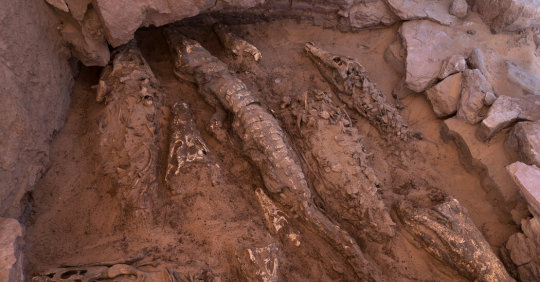
Found beneath an ancient dump, the mummies shed light on ancient Egyptian mummification practices and the many lives of a necropolis.
At first glance, you may think you’re looking at a picture of living crocodiles moving stealthily through mud. But the animals above are mummies, possibly dead for more than 2,500 years and preserved in a ritual that likely honored Sobek, a fertility deity worshiped in ancient Egypt.
The mummies were among 10 adult crocodiles, likely from two different species, the remains of which were unearthed recently from a tomb at Qubbat al-Hawa on the west bank of the Nile River. The discovery was detailed in the journal PLoS ONE on Wednesday.
The crocodile has played an important role in Egyptian culture for thousands of years. In addition to being linked to a deity, it was a food source, and parts of the animal, like its fat, were used as medicine to treat body pains, stiffness and even balding.
Mummified animals, including ibises, cats and baboons, are relatively common finds in Egyptian tombs. Other mummified crocodile remains have been dug up, but most have been juveniles or hatchlings; additionally, the ones discovered in this new study were in great shape.
“Most of the time I’m dealing with fragments, with broken things,” said Bea De Cupere, an archaeozoologist at the Royal Belgian Institute of Natural Sciences and a co-author of the study. “To hear you have 10 crocodiles in a tomb. That’s special.”
Uncovering the Past, One Discovery at a Time
Friends on a Mission: Three hobbyists hunting for Bronze Age rock carvings have transformed Norway’s knowledge about prehistoric art.
Animal Mummies: The discovery of 10 mummified crocodiles in an Egyptian tomb shed light on ancient mummification practices and the many lives of a necropolis.
Meet the Neanderthals: Analyzing fossils from a cave in Russia, scientists have identified the first known family of Neanderthals.
Ancient Tomb: In Lima, home to more than 1,000 archaeological sites, the discovery of pre-Columbian graves is just the latest encounter with an omnipresent past.
She was called to the Qubbat al-Hawa site by a research team led by Alejandro Jiménez Serrano, an Egyptologist from the University of Jaén in Spain. In 2018, researchers uncovered seven small tombs under a Byzantine-era rubbish dump. In one of the tombs — sandwiched between the dump site and four human burials believed to be from around 2100 B.C. — were the mummified crocodiles.
Dr. De Cupere studies everything including bones, teeth and shells as well as coprolites, or fossilized feces, and animal prints. “You have archaeologists doing an excavation and, if they find animal remains that they think are worth looking at, that’s when we come into the picture,” Dr. De Cupere said.

The crocodiles emerged from a small tomb under a Byzantine-era rubbish dump. Video by Patricia Mora Riudavets and José Luis Pérez García.
Of the 10 mummified adult crocodile remains found, five were just heads and the other five were in varying states of completion, but one, at over seven feet long, was nearly complete. Often animal and human mummies are found wrapped in linen bandages secured by resin, which means scientists use techniques like CT scans or X-rays to see through the material. The Qubbat al-Hawa crocodiles contained no resin, and the only fragments of linen present had been all but entirely eaten by insects, allowing the researchers to study the mummies at the excavation site.
Based on skull shape and how the bony plates, or scutes, on the animals were arranged, the team hypothesized that the majority of crocodiles in the tomb appeared to be one species, Crocodylus suchus, while others were Crocodylus niloticus. Salima Ikram, an Egyptologist at the American University in Cairo who was not involved in the study, said that gathering this kind of information provided insight into ancient Egyptian understanding of the distinct behaviors of these two species and which the Egyptians would want to interact with, “because niloticus will eat you, whereas with suchus, you can conceivably swim in the same pool and live,” Dr. Ikram said.
A lack of resin also indicated that the crocodiles were probably mummified by being buried in the hot, sandy soil, where they dried out naturally before being entombed, which the researchers proposed happened before the Ptolemaic period, which lasted between 332 B.C. and 30 B.C.
“From the Ptolemaic period onward, they used huge quantities of resin,” Dr. De Cupere said.
The team hypothesized that the crocodile mummies were buried around the fifth century B.C., when animal mummification was increasingly popular in Egypt. But it will take radiocarbon dating to know for sure. The researchers hope that, in the near future, there will be a chance to perform such dating, as well as DNA analysis to verify the two species.
“The discovery of these mummies offers us new insights into ancient Egyptian religion and the treatment of these animals as an offering,” said Dr. Jiménez Serrano.
Dr. Ikram also views these discoveries as an important window into the relationship between people and the Qubbat al-Hawa necropolis, from the first burials over 4,000 years ago to the present day. “Within the community, how were these tombs viewed? What were their uses?” Dr. Ikram said. “You’re seeing how these tombs had after lives and lives.”
#News
1 note
·
View note
Text





They look like Christmas tree decoration, these capsules of shark eggs!
Yes, certain shark species lay eggs (while others bear live young). The imprint of the capsule protecting the egg has fossilized. The basic shape of the shark is already there! The tendril on top of the egg capsule helps to hold onto structures on the seafloor.
These tiny (<4cm) fossil imprints are 320 (!) million years old. They were found in (now closed) coal mines in Belgium. By studying them our researchers identified more than 10 different species.
The egg capsule fossils in our collections witness of a high diversity in sharks spawning and nursing in ancient Belgian waters.
[Pic 1: Ronald Böttcher, State Museum of Natural History Stuttgart; Drawing: Frederik Spindler; extant shark eggs and capsules: Yohanes Wahyu Nurcahyo; B&W pictures of fossils: B. Mottequin et al. in 'The Science of Nature']
#nature is the greatest show#fossil friday#naturalsciencesbrussels#royal belgian institute of natural sciences#fossils#sharks#eggs
99 notes
·
View notes
Text
Scientists Discover Mysterious Ice Age Structure Built from Bones of 60 Mammoths in Russia
[ad_1]
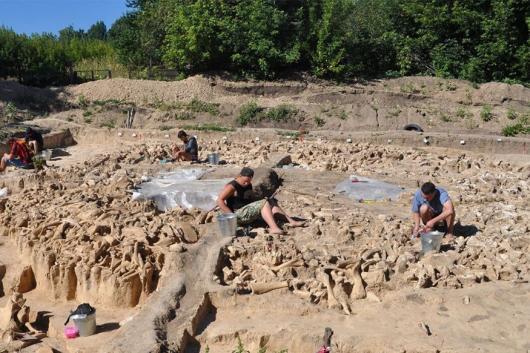
(Image credit: Twitter/@pourmecoffee)
The excavation revealed that the structure was built with mammoth bones, dated 20,000 years ago. The structure also included reindeer, horse, bear, wolf, red fox and arctic fox bones.
Trending Desk
Last Updated: March 19, 2020, 7:01 PM IST
We are equipped with a number of facilities and services today to adapt ourselves…
View On WordPress
#Antiquity#bones of mammoths#ice age#Kostenki Museum-Preserve#mammoths#mysterious ice structure#Royal Belgian Institute of Natural Sciences#Russia#Ukraine
0 notes
Photo
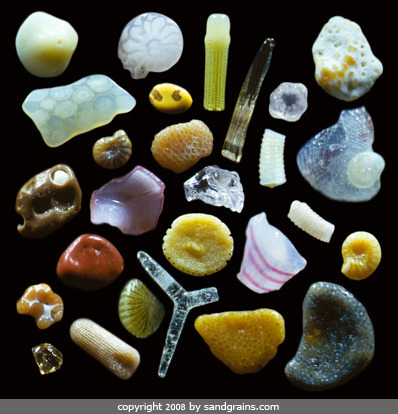
A Grain of Sand
Sand is soft, scratchy, in all the wrong places, and boring... or is it? Each minute sand grain has a remarkable history with roots in diverse geological processes, from explosive volcanic eruptions, to the formation and destruction of intricate sea shells. Each grain is somewhere on its journey from formation to destruction, and will eventually be re-cycled by the planet's huge, slow chemical and physical cycles. These journeys are captured in the spectacular work of Dr Gary Greenberg, who has been photographing sand for decades. The sand grains in this picture are from Maui, and are mainly the remains of living creatures, some more intact than others. Just in these few grains there are fragments of corals, sea urchins, bivalves, gastropods, bryozoans and encrusting algaes, there are near-complete foraminifera and the skeleton of a juvenile sponge (the three-pronged structure), as well as a few grains of 'terrigenous' material - ground up rocks from the land.
OB
Image Source: http://sandgrains.com/ (with permission)
More about Sand from The Earth Story: - 'Sand Star Beach': http://goo.gl/4g4EIu - A 'Sand Tsunami': http://goo.gl/eQ84G5 - The mineralogical side of sand: http://goo.gl/Vjyfuc - Wind erosion of sand: http://goo.gl/4TiwGr - A pufferfish's sand garden: http://goo.gl/0mRDDa
#text message#royal belgian institute of natural science#shell#photography#mauritius#hawai#fossil#geology#rock#sediment#the earth story
658 notes
·
View notes
Text
Pterosaurs May Have Had Brightly Colored Feathers, Exquisite Fossil from Brazil Reveals
An amazingly well-preserved fossil suggests the common ancestor of dinosaurs and pterosaurs also had some type of feather or feather precursor
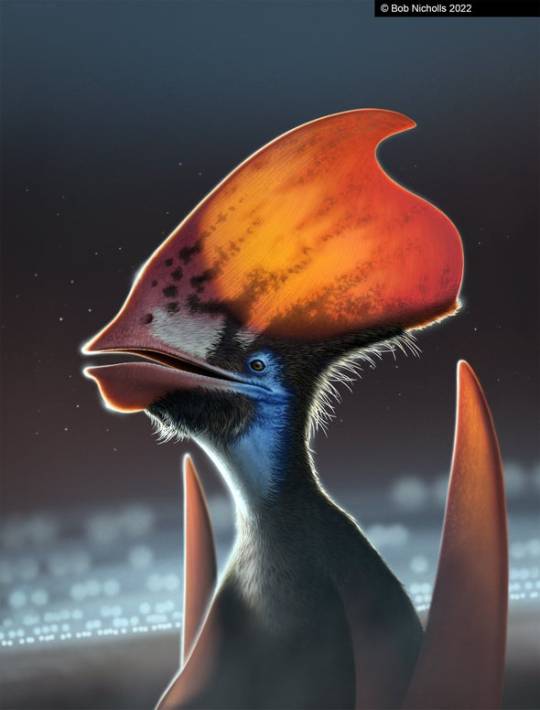
Long before the first birds flapped and fluttered, pterosaurs took to the skies. These leathery-winged reptiles, their bodies coated with wispy filaments paleontologists call pycnofibers, were the first vertebrates to truly fly. Now experts are beginning to think pterosaurs and birds had more in common than previously assumed: An exquisitely preserved fossil from Brazil not only hints that pterosaurs’ peculiar filaments may have been true feathers but also suggests that this plumage could possibly have been as riotously colored as that of any modern toucan or tanager.
The fossil, described on Wednesday in a new study in Nature, is a pterosaur called Tupandactylus imperator that was found in the Early Cretaceous limestone of Brazil’s Crato Formation. “What is remarkable about this specimen—and very obvious when you look at it—is the fact that it preserves extensive soft tissues,” says study co-author Maria McNamara, a paleobiologist at University College Cork in Ireland.
This specimen has a vague and complicated history. It is unclear who found the fossil or when they did so, but it wound up in the hands of a private collector and was later given to the Royal Belgian Institute of Natural Sciences. At that point, paleontologist Edio-Ernst Kischlat “was then contacted to find an official agreement with Brazilian authorities and the Embassy of Brazil in Brussels,” says the new study’s lead author Aude Cincotta, now at the Belgian institute.In October 2021 the institute signed a deal with the Brazilian embassy to repatriate the fossil, and it arrived at Rio de Janeiro’s Museum of Earth Sciences in February of this year.
Whatever the story behind the pterosaur fossil, leaving private hands to a secure place in a museum allowed it to finally be described. Initially, McNamara says, she and her colleagues studied the specimen with an eye toward identifying the details of its remarkably clear soft tissues. The researchers were not necessarily looking for clues to color, she notes—but she says they were “delighted” to find such evidence in the form of microscopic structures called melanosomes.
Melanosomes’ shape and density, as well as their distribution in skin, feathers and other tissues, help create what biologists know as structural colors: hues that range from rust red to oil-slick iridescent and that are created by the way light interacts with the feathers. (These structures can only provide a partial picture of an animal’s coloration, however, because many shades are created chemically.) McNamara and her co-authors found different melanosome shapes in Tupandactylus’s skin and in two types of the fluffy, featherlike filament structures along its skull, implying the colors in each would have been different from one another.
Continue reading.
@mindblowingscience
#brazil#science#biology#paleontology#dinosaurs#defend brazilian science#mod nise da silveira#image description in alt
214 notes
·
View notes
Text
Pterosaurs may have flaunted colorful plumage long before the reign of dinosaurs | Science

The idea that dinosaurs sported colorful feathers, once outlandish, has become conventional wisdom. Now, a new study of a Brazilian fossil suggests that pterosaurs—leathery winged, flying reptiles only distantly related to dinosaurs—were also clad in tiny feathers of varying hues. The finding suggests feathers may have evolved more than 150 million years before the heyday of the dinosaurs, probably for display, the authors say. “In their very earliest forms, feathers were colored … presumably for signaling,” says paleobiologist Maria McNamara of University College Cork, who led the study.
The paper “reinforces the idea that pterosaurs were ‘fluffy,’ and indicates at least some of them probably had complex colorful patterns—which is fantastic,” says Rodrigo Pêgas, a paleontologist at the Federal University of ABC, São Bernardo do Campo, in Brazil. But Pêgas is not convinced that feathers originated as early as McNamara thinks—and some other researchers doubt the structures are feathers at all.
How feathers arose has been a big question in paleontology for more than 150 years, since the first Archaeopteryx—a feathered dinosaur once thought to be the first bird—was found in Germany. Many researchers think feathers arose for insulation and were co-opted only much later for flight and other uses, such as courtship displays. As for pterosaurs, researchers had previously reported their bodies were covered in pycnofibers, single-stranded structures that formed a “fuzz,” presumably for warmth.
Then in 2018, McNamara and her colleagues reported that two well-preserved Chinese pterosaurs showed what seemed to be a defining feature of feathers: a central shaft with branches. Some paleontologists were skeptical, and McNamara says she understood why. “Their feathers were—to be honest—a bit weird,” she says. “They didn’t branch like modern bird feathers do.”
Now, she and her colleagues have cemented their arguments with a paper this week in Nature analyzing the soft tissue of an exquisitely preserved skull of Tupandactylus imperator—a pterosaur that had a majestic head crest and a 5-meter wingspan. It lived 113 million years ago in what is now the Araripe Basin in northeastern Brazil, although McNamara studied the fossil in Belgium. The team thinks it was poached from Brazil and kept in private collections until recently. Earlier this year, the Royal Belgian Institute of Natural Sciences repatriated the fossil to Brazil, where it will be displayed at the Earth Sciences Museum in Rio de Janeiro. “It is great that the fossil is back in Brazil,” Pêgas says.
On the pterosaur’s head crest, the researchers identified both single-stranded fibers and featherlike branching ones with a central shaft narrowing at the base. Under the scanning electron microscope, both skin and feathers had melanosomes, intracellular structures containing melanin that give pigment to skin, feathers, and fur in living animals, with differently shaped melanosomes conferring different colors. The pterosaur’s melanosomes had diverse shapes—ovoid, spherical, and elongated—something until now only seen in mammalian fur and dinosaur and bird feathers.

Tupandactylus imperator, a large pterosaur that lived in what is now Brazil, may have sported a colorful head crest, as seen in this artist’s illustration.© Bob Nicholls 2022
The researchers think Tupandactylus’s colored, branching structures were indeed feathers, which both kept it warm and enabled it to signal to other pterosaurs, perhaps as male peacocks do by displaying plumage during mating.
The finding means feathers must have evolved far earlier than was thought, McNamara says. “The most parsimonious explanation is that feathers were present in the common ancestor of [pterosaurs and dinosaurs],” about 250 million years ago during the Triassic period.
Some paleontologists say the evidence of feathers is persuasive. “We’re hammering it in with 7-inch nails with these findings,” says Jakob Vinther, a paleobiologist at the University of Bristol. Paleontologist Michael Benton, also at Bristol, agrees, but “I don’t think pterosaur feathers had any function in flight because they’re just fluffy little feathers.”
But paleontologist David Martill from the University of Portsmouth says the small branched structures “look nothing like feathers.” He thinks they are a different kind of keratinous covering, though he agrees they were probably spectacularly colored.
Even if they are feathers, pterosaurs may not have flaunted them like Mesozoic peacocks, Vinther says. He notes that the researchers didn’t infer the melanosomes’ color and says it’s possible the plumage was used for camouflage rather than display.
Nor is it certain that the pterosaur structures share an ancient origin with those of dinosaurs and their descendants, living birds, some researchers say. “We still need fossil evidence for feathers in the Triassic as well as unequivocal molecular evidence for the common origin between pterosaur pycnofibers and dinosaur feathers,” Pêgas says.
McNamara promises more evidence for her scenario. Her team is working to characterize the detailed chemistry of the Tupandactylus samples, which could reveal organic compounds in the feathers.
If the current findings hold up, they may shed light on the selection pressures that shaped early feathers, says Jasmina Wiemann, a molecular paleobiologist at the California Institute of Technology. “Thermal regulation has been the old hypothesis out there … [but] maybe there’s more to it.”
New post published on: https://livescience.tech/2022/04/21/pterosaurs-may-have-flaunted-colorful-plumage-long-before-the-reign-of-dinosaurs-science/
2 notes
·
View notes